It’s interesting to know that oral hygiene practices are one of the habits we learn early in life after learning how to walk and a daily habit majority of us engage in but very few people understand why.
Every child at least below the age of 4 will not willingly allow their parent to brush their teeth, it is an every morning physical battle and some parent resort to threats, bribery, coercion, arm-twisting and leg-tying just to get their children to brush their teeth. Adolescents take pride in the ability to brush their teeth without supervision, in their mind “now I’m old enough”. The habit continues for a lifetime.
Its Teethlicious Tuesday and I want to throw more light in the reason why we brush our teeth EVERYDAY. A lot of people focus on the secondary reasons e.g. have white teeth, fresh breath, be approachable, be confident, be kissable etc.
But the primary reason is subtle, known or easily forgotten. If you already know why great! This will be a reminder and if you are not sure or your understanding is blur, read on.
There is nothing you can do about this: Human beings are home for a lot of microorganisms and we are called host and those microorganisms are called normal flora. That means there is a mutual understanding. These microorganisms are all naturally present in the oral cavity, skin, bowels, hair, nose and are normally harmless.
Oral Cavity: Once the first tooth appears the microorganisms’ starts to build their homes and they lay a foundation called dental plaque.
The warm and moist environment present in the human mouth allows the growth of microorganisms normally found there. Saliva provides a source of water and primary nutrients including amino acids, proteins and glycoprotein, as well as a moderate pH and temperature. This feeds the bacteria involved in plaque formation.
How Dental Plaque is formed? An acquired pellicle which is a layer of saliva that is composed of mainly glycoprotein and forms shortly after cleaning of the teeth or exposure of new teeth. Bacteria then attach to the pellicle layer, form micro-colonies, and mature on the tooth, it becomes a dental plaque.
Dental plaque is a biofilm, a sticky colorless deposit that adheres to the teeth and gums to resist mechanical flushing from the mouth to stomach where acid-sensitive microbes are destroyed by hydrochloric acid.
It is commonly found between the teeth, on the front of teeth, behind teeth, on chewing surfaces, along the gumline, or below the gumline cervical margins. It can be difficult to visualize dental plaque on the hard tissue surfaces, however, a rough surface can be felt after eating or when you wake up in the morning before tooth brushing.
Consequences of dental plaque buildup: Failure to remove plaque the microrganisms are allowed to continue to build their homes hardens the plaque to establish their first floor accommodation called calculus or tartar. It is often brown or pale yellow
The bacteria in plaque convert carbohydrates in food (such as sugar) into acid that demineralises teeth, eventually causing cavities
Plaque can also cause inflammation of the gum (gingivitis), making it red, tender and can easily bleed when flossing or brushing your teeth. If this is not treated, bones around the teeth can be affected eventually leading to periodontitis. If not treated, the loss of bone structure may cause teeth to become mobile.
How do we remove plaque? Because of the consequences of plaque build-up it is important to disrupt the mass of bacteria and remove it daily. Removing of plaque is the reason we brush our teeth daily. Not to whiten, not to have fresh breath, not to mark register. It explains why people who even use chewing sticks still have good oral health.
Routine tooth brushing is the principle method of preventing many oral diseases, and perhaps the most important activity an individual can practice to reduce plaque build-up. Controlling plaque reduces the risk of the individual suffering from plaque-associated diseases such as gingivitis, periodontitis, and caries – the three most common oral diseases in the world.
Home Care: Brush twice daily: Many people used different forms of teeth cleaning tools eg chew sticks, tree twigs, bird feathers, animal bones, neem tree and toothbrush. Dentists recommend a medium/soft bristled toothbrush.
Dental dentifrices: toothpaste with fluoride is an important tool to readily use when tooth brushing. The fluoride in the dentifrice is an important protective factor against caries, and an important supplement needed to remineralise already affected enamel.
Floss once daily: Tooth brushing alone will not remove plaque from all surfaces of the tooth as 40% of the surfaces are interdentally. One technique that can be used to access these areas is dental floss.
Professional Care: Dental plaque hardens into dental calculus (also known as tartar). Calculus cannot be removed through tooth brushing or with interdental aids, but only through professional cleaning.
The treatment is to remove plaque inside the deep pockets between the tooth surface and the gum tissues using specialized dental equipment.
See a dentist at least every six months for professional care
It is important to be aware that EVERYONE has dental plaque. Dental biofilm begins to form on the tooth only minutes after brushing. Its formation is a normal process that cannot be prevented. However, the severity of the build-up and the consequences of not removing the plaque can vary.
Thanks for reading stay tuned next week for more teethlicious updates. Till then stay gorgeous and stay professional
Happy Liplicious Tuesday ooop…I mean Teethlicious Tuesday!


